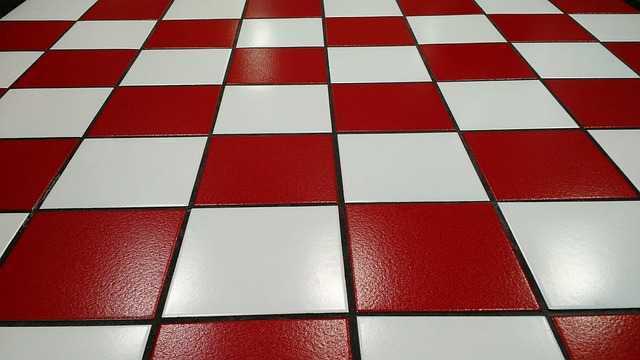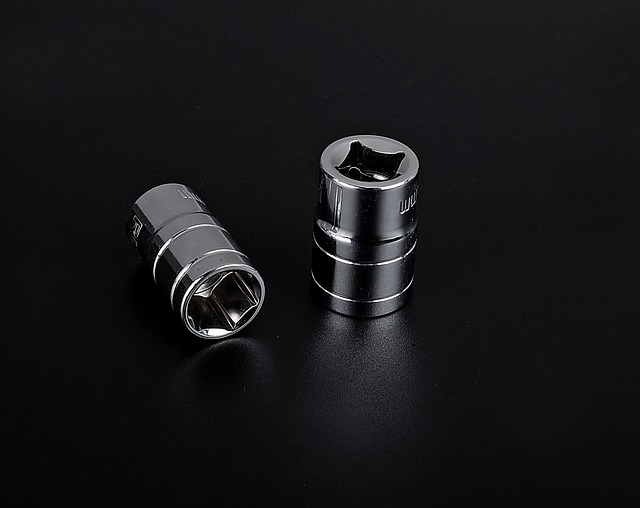Understanding grout stain causes is vital for effective removal. Regular cleaning may not suffice for deep-seated issues. Key steps include identifying stain sources, preparing the area, gathering tools, and selecting the right cleaning products based on stain type. Natural remedies like baking soda and vinegar are cost-effective options, while professionals offer advanced tools for stubborn stains. Maintaining grout involves regular cleaning, sealing, and preventing dirt tracking to minimize staining. Avoiding harsh chemicals and prompt addressal of water damage prevent recurring issues, ensuring long-lasting grout appearance.
Looking to revive your tired, stained grout? This comprehensive guide provides affordable solutions for effective grout stain removal. We’ll explore common causes of stains, from everyday spills to hard-to-remove residue. Learn how to prepare your space, select the best cleaning products, and follow step-by-step methods for a deep clean. Discover natural remedies and when professional help is warranted. Plus, get expert tips for maintenance, prevention, and avoiding costly mistakes. Keep your grout looking new with these proven strategies!
Understanding Grout Stain Causes

Understanding the causes of grout stains is a crucial first step in effective grout stain removal. Grout, a material often used to fill the gaps between tiles, can accumulate dirt, grime, and various substances over time, leading to unsightly stains. Common causes include spills from liquids like coffee, tea, or wine, which can quickly penetrate the porous grout. Additionally, food particles, pet accidents, and even mold growth can contribute to staining.
Another significant factor is environmental exposure, as sunlight and air pollution can fade and discolor grout over extended periods. Regular cleaning routines may not always be sufficient for deep-seated stains, making it essential to employ targeted stain removal techniques. By identifying the specific sources of staining, homeowners or professionals can choose the most effective methods for a fresh and clean grout appearance.
Preparing Your Space for Stain Removal

Before tackling grout stain removal, preparing your space is crucial. Begin by clearing the area around the stained grout, removing any loose debris or dirt that might interfere with the cleaning process. Protect surrounding surfaces with drop cloths or plastic sheets to prevent cleaning solutions from spilling and causing additional damage. Ensure proper ventilation in the room to make working with cleaning chemicals safer and more comfortable.
Next, gather all necessary tools and materials for grout stain removal, including a sponge, warm water, mild detergent, a grout brush, and a high-quality grout cleaner. Read and follow the instructions on the grout cleaner’s packaging for best results. This preparation ensures that you’re equipped to effectively tackle the grout stains, achieving a cleaner, more aesthetically pleasing space without unnecessary hassle.
Choosing the Right Cleaning Products

When tackling grout stain removal, selecting the appropriate cleaning products is a key first step. The market offers various options tailored for different types of grout and stains. For instance, enzyme-based cleaners are effective at breaking down organic compounds, making them ideal for removing common kitchen and bathroom stains. On the other hand, acidic solutions like vinegar or muriatic acid can help dissolve mineral deposits and restore the original colour of your grout.
Before purchasing any product, check the label to ensure it’s suitable for grout and consider testing a small, inconspicuous area first. This prevents damaging or discolouring your grout entirely. Additionally, always follow safety instructions and wear protective gear like gloves and goggles when handling chemicals to avoid skin or eye irritation.
Steps for Effective Grout Stain Elimination

Removing grout stains doesn’t have to be a costly or complex process. With a few simple steps, you can achieve significant results in your grout stain elimination efforts. Start by identifying the type of stain; whether it’s from coffee, wine, or mold, different approaches may be required. Next, create a cleaning solution using a mixture of water and white vinegar, or for tougher stains, a mild detergent. Apply the solution to the affected areas, let it sit for several minutes, and then scrub gently with a soft-bristled brush. Rinse thoroughly afterward to remove any residue.
For more stubborn stains, consider using specialized grout stain removers available in the market. These products often contain powerful yet safe enzymes that can break down and eliminate deep-seated dirt and grime. After applying the remover, follow the product instructions for waiting times and rinse carefully. Regular maintenance is key; wipe down your grout regularly with a damp cloth to prevent future staining and keep your spaces looking fresh.
Natural Remedies for Stains

When it comes to removing grout stains, there are several natural remedies that can be effective and cost-friendly options for DIY enthusiasts. Many common household items can act as powerful stain fighters without breaking the bank. For example, baking soda is a popular choice due to its abrasive yet gentle properties; it can scrub away dirt and grime while being safe on grout surfaces. Creating a paste with water and applying it to the stained area can help lift stains, leaving your grout looking fresher.
Another natural ally in the fight against grout stains is vinegar. Its acetic acid content naturally breaks down and dissolves various types of stains. Mixing equal parts vinegar and water can create a powerful cleaning solution. This simple mixture can be easily applied with a soft cloth or sponge and left to soak for a few minutes before scrubbing away any residual dirt. These natural remedies offer an affordable and eco-friendly way to tackle grout stain removal, providing an excellent alternative to commercial products.
When to Consider Professional Help

If your grout stain removal efforts have been fruitless, it might be time to consider professional help. While DIY methods can be cost-effective and satisfying for some tasks, grout stain removal often requires specialized tools and chemicals that are best handled by experts. Grout, especially in older or heavily soiled spaces, can develop deep-seated stains caused by mold, mildew, or years of buildup. These stubborn issues may not yield to standard home cleaning products.
Professional grout stain removal services bring expertise and powerful tools to tackle these challenges. They have access to advanced cleaning solutions that are safe for your surfaces but tough on stains. Moreover, professionals can assess the scope of the problem and provide tailored solutions, ensuring a longer-lasting clean without damaging your grout or tiles.
Tips for Maintenance and Prevention

Maintaining grout in top condition is a proactive approach to prevent future stain removal challenges. Regular cleaning with a mild detergent and warm water can help keep it looking fresh. Avoid using harsh chemicals, as they can damage the grout and make stain removal more difficult. Additionally, sealing the grout after cleaning can create a protective barrier against stains. This simple step, often overlooked, significantly extends the life of your grout and makes future stain removal easier.
Prevention is key when it comes to grout stain removal. To avoid stains from the start, be mindful of what you track into your home, especially in areas with grout like kitchens and bathrooms. Wearing shoes indoors or using mats can minimize dirt and grime. Also, promptly addressing spills or leaks will prevent staining. Regular cleaning and maintenance, combined with these preventive measures, ensure your grout stays in excellent condition, making stain removal a rare occurrence.
Common Mistakes to Avoid

When tackling grout stain removal, it’s easy to make mistakes that can worsen the situation or lead to an ineffective cleaning process. One common error is using aggressive chemicals without understanding their impact on the grout material. Grout is a porous substance, and strong bleach or acid-based cleaners can damage its structure, causing further discoloration or even erosion over time. Always opt for gentle, non-toxic alternatives, especially for older grout that may be more fragile.
Another mistake to avoid is not addressing the root cause of the stain. Grout stains often result from moisture seepage or improper sealing. Skipping crucial steps like thorough cleaning, drying, and re-sealing can lead to persistent staining. Proper preparation and maintenance are key; ensure you clean the grout regularly, use appropriate sealants, and address any signs of water damage promptly to prevent future stain issues.
Conclusion: Keeping Grout Looking New

Keeping your grout looking new and pristine doesn’t have to be a daunting or expensive task. By adopting a proactive approach, you can prevent stains from setting in and prolong the life of your grout. Regular cleaning with mild, natural solutions like baking soda and vinegar is an effective and affordable method. Additionally, sealing your grout after cleaning can provide an extra layer of protection against future stains. This simple step, often overlooked, can make a significant difference in maintaining the appearance of your grout over time. With these easy-to-implement strategies for grout stain removal, you’ll be able to keep your spaces looking fresh and inviting without breaking the bank.
